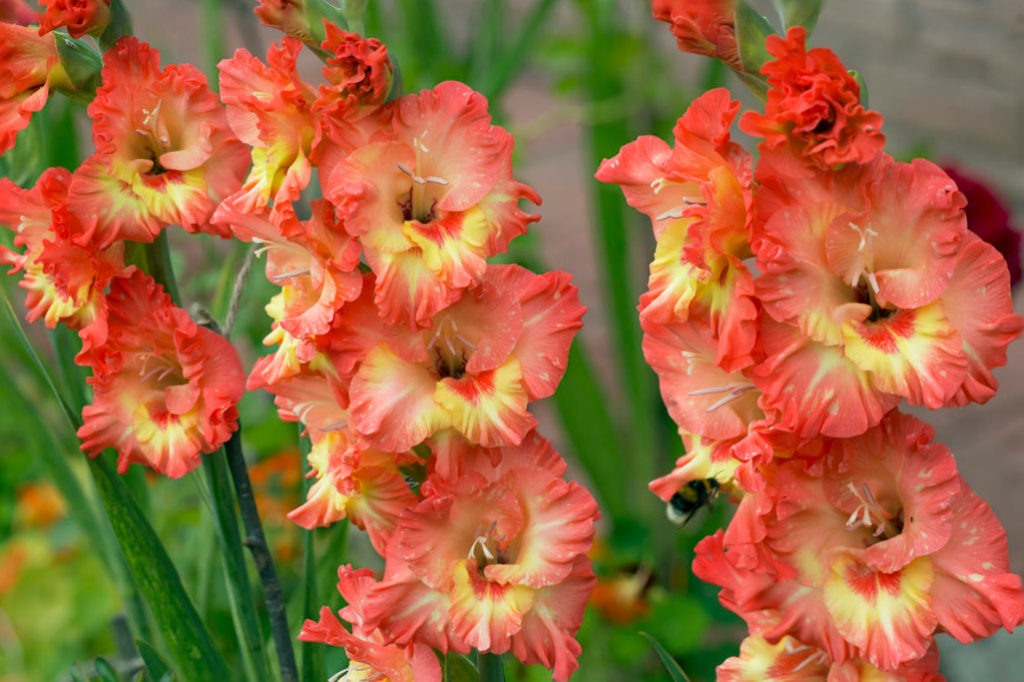In the multicolored carnival of bulbous flowers, the mysterious gladiolus always stands out. There is something special about this flower. Majestic gladiolus is filled with dignity, nobility and Royal grace, so conquers gardeners once and for all.
This plant has a difficult character, and it will not reveal its amazing beauty to everyone. Only an attentive and courteous gardener can make friends with him, who will provide a proud gladiolus with comfortable living conditions on his site. Courtesy with this flower you have throughout the season, but especially reverent attitude he will require after flowering.
Features of culture
Gladiolus is a perennial culture. In the South, corms are left to winter in the soil, having previously planted overgrown nests. And residents of the middle zone (and especially summer residents of the Northern regions), before the onset of a steady cold snap, it is necessary to dig up corms and store them until spring in more comfortable conditions.
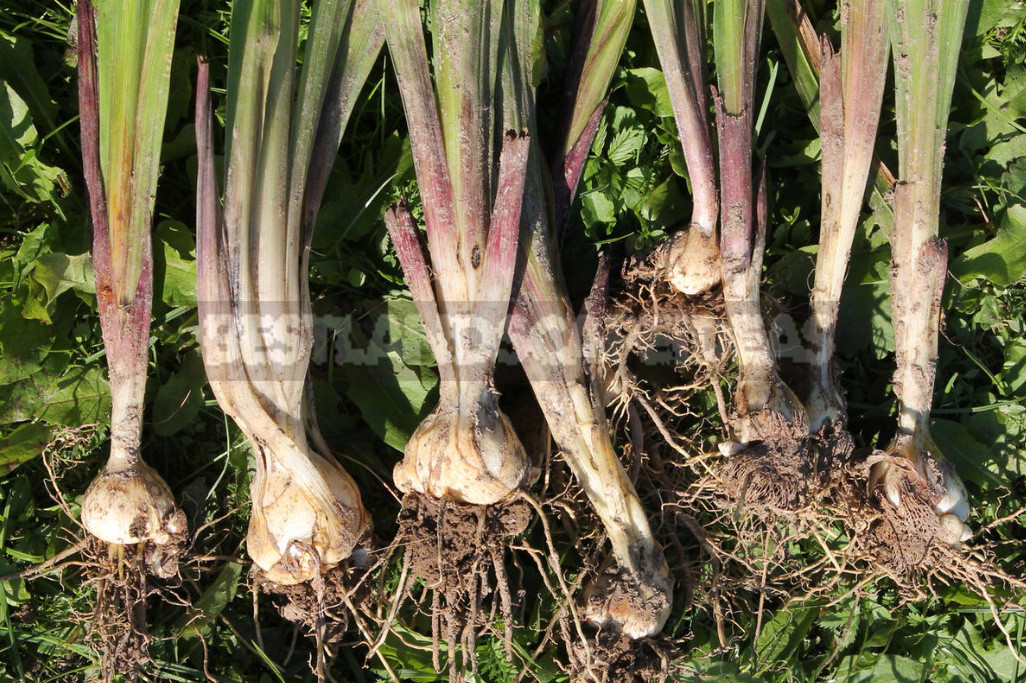
Remember that after flowering (or cutting) the gladioli need to give time for the ripening of the underground part. During this period, it should have time to accumulate enough nutrients to adequately winter and in the next season to release a strong peduncle.
The timing of digging the corms
Digging corms depends on the timing of flowering of each variety and your region of residence. In this case, be guided by the General rule, which applies to all varieties of culture: from the moment of cutting the peduncle to digging corms should take 30-40 days.
Corms, dug too early, often do not survive until spring, and if overwintered, may next season refuse to bloom. It is also impossible to overexpose them in the ground, especially in rainy weather. In such conditions, the risks of plant fungal diseases are increased, as a result of which the corms rot and become unsuitable for future planting.
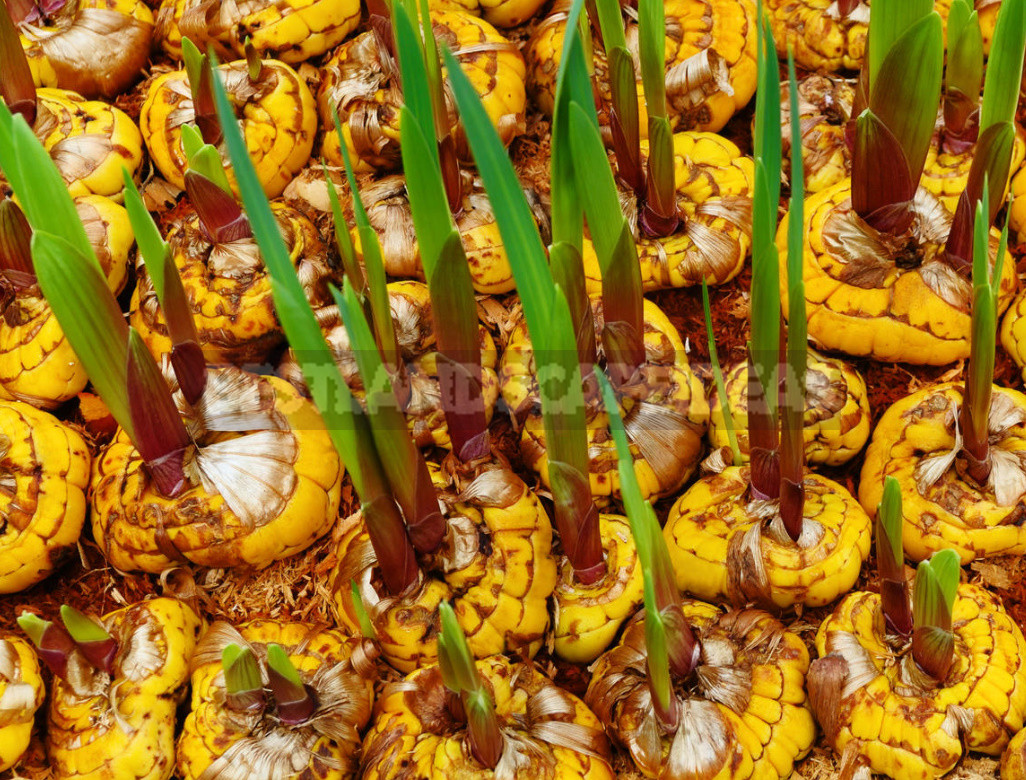
We should also say about the main enemy of gladiolus-thrips. This pest often negates the efforts of the gardener, damaging the aerial part of the plant in the summer. To insects do not have time at the end of the season to move to the bottom and under the scales of corms, try to dig them up to the moment when in your region the temperature drops below + 8…+10°C.
If you are a beginner and are just going to start breeding gladioli, listen to the advice: plant early varieties separately from the middle and late, and the kids – away from adults. This will simplify the digging of gladioli in the fall, because the first to ask for it early varieties and plants grown from adult corms. And be sure to get a diary in which you will mark the date of cutting or end of flowering of each variety, so as not to miscalculate with the time of cleaning.

Stems: cut or keep?
High peduncle takes a lot of strength from the plant and severely depletes the corm planted in the spring. That she gained strength before wintering and gave a decent offspring, the peduncle should be removed-the sooner the better.
Some gardeners cut flower stalks gladiolus immediately after flowering, so they do not expend energy on the formation of seeds. But more experienced comrades will confirm that the beauty of this lovely flower is better to admire not in a flower bed, but in a cut.
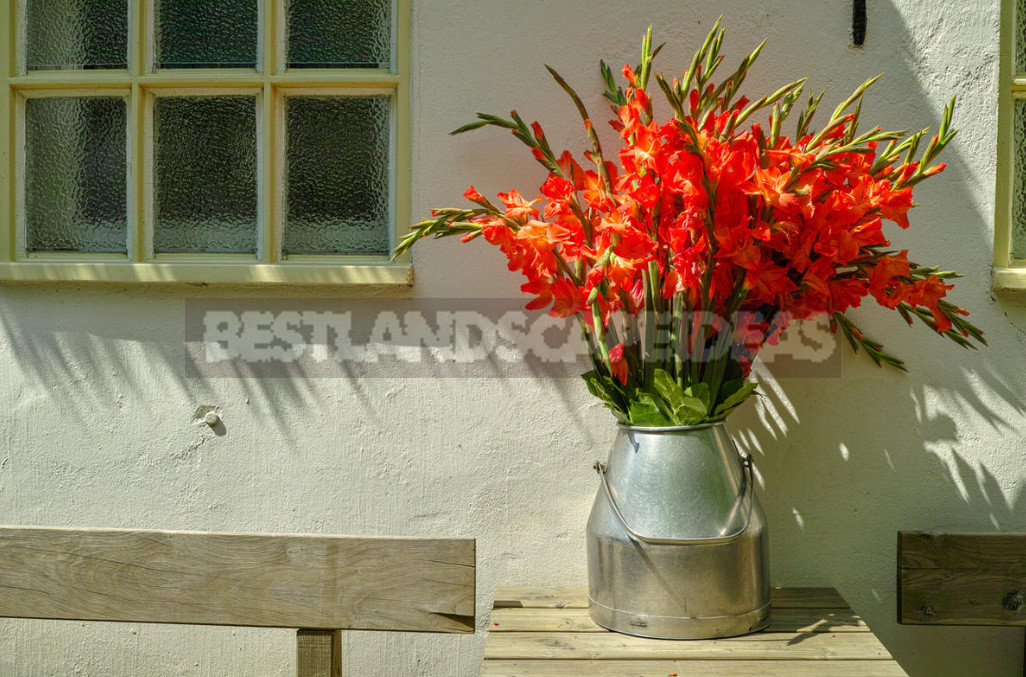
Cutting stems at the beginning of flowering, you will help corms best ripen, accumulate maximum nutrients and lay strong flower buds next season. The ideal moment for harvesting when the stems will reveal the bottom 1 Bud (others will continue to blossom in a vase) or when the 2 lower Bud will turn typical of the sort of hue.
If the buds on the peduncle are in no hurry to “pour”, and forecasters scare early cold snap, spend cutting to the detriment of flowering. So you can keep your favorite variety: help corms and kids Mature and please you with beauty next year. Cut early in the morning or evening using a sharp clean knife. Gently push the leaf rosette and cut the peduncle so that the rest of it was deeply hidden in the foliage. During cutting, leave at least 4 leaves on each plant – they are needed for the full development of corms.
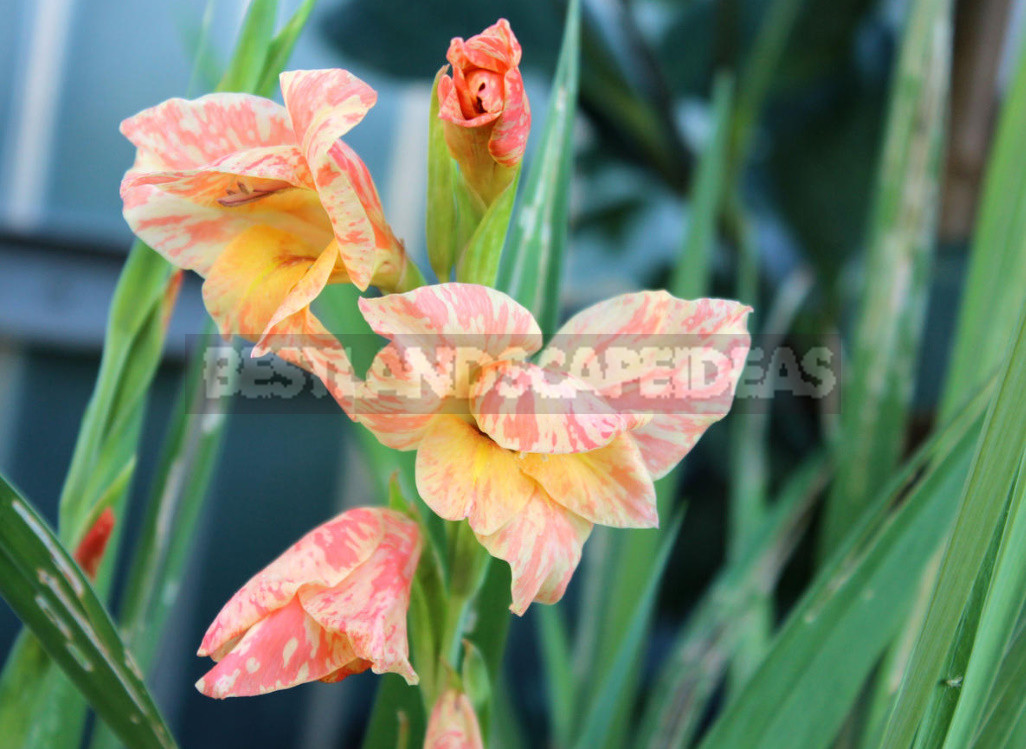
If you plant gladioli exclusively to decorate the flower beds and leave the stems on the plants until the end of flowering, do not forget that the terms of harvesting corms with this approach are shifted. In this case, they will need to Mature not 30-40, but 50-60 days, which will put them at great risk in the autumn.
Care for plants after cutting the peduncle
To help plants maintain health and grow quality planting material, provide them with proper care. Remember that abundant watering gladiolus only need to bloom, and after cutting the peduncle it should be minimized. This will protect the corms from rotting and help them to accumulate the maximum amount of spare substances.
Speed up these processes will also help phosphorus-potassium fertilizing, which is better to give the plants in the form of a solution. To do this, dissolve 2 tablespoons of superphosphate and 1 tablespoon of potassium sulfate in 10 liters of water or use an ash infusion. To prepare it, take 2 cups of sifted wood ash, dilute in 10 liters of water and insist the contents of 2 days, stirring occasionally. Consumption of both drugs-10 liters per 1 m2 beds.
Do not forget to loosen the soil around the plants regularly to ensure the flow of oxygen to the roots. During loosening remove weeds, so they do not steal from gladiolus nutrients. A couple of weeks before digging, treat the gladioli with an insecticide solution to protect against thrips. Soil under the plants, pour a bright pink solution of potassium permanganate – this measure will protect the corms from fungal infections.
Digging corms and storage preparation
For harvesting corms, choose a dry fine day and arm yourself with a pitchfork. Dig around on all sides of the plant and remove the corms by gently pulling the leaf outlet. Check if there are any in the soil detached kids. Shake off the soil and if the foliage is still green, spread the plants on a tarp and leave for a few days to allow the nutrients from the leaves to pass into the corms.
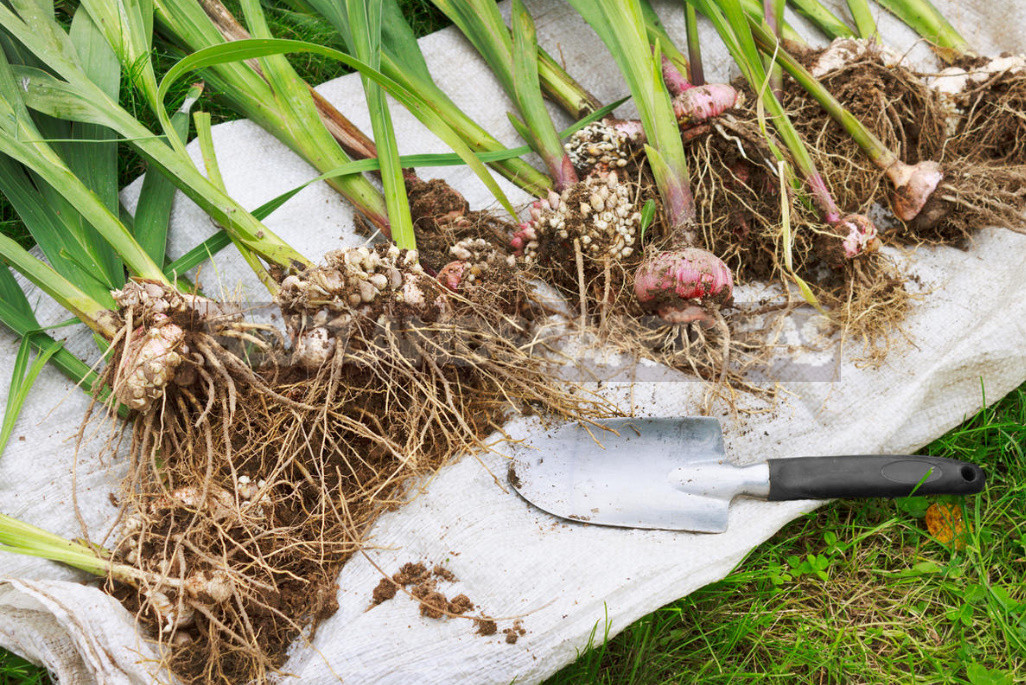
Cut the shoots of plants, stepping back from the uterine corm 1 cm, and separate the children. Remove any remaining dirt by rinsing under running water. After that, you need to carefully inspect the planting material of the next season: to cull, decompose by varieties and sizes.
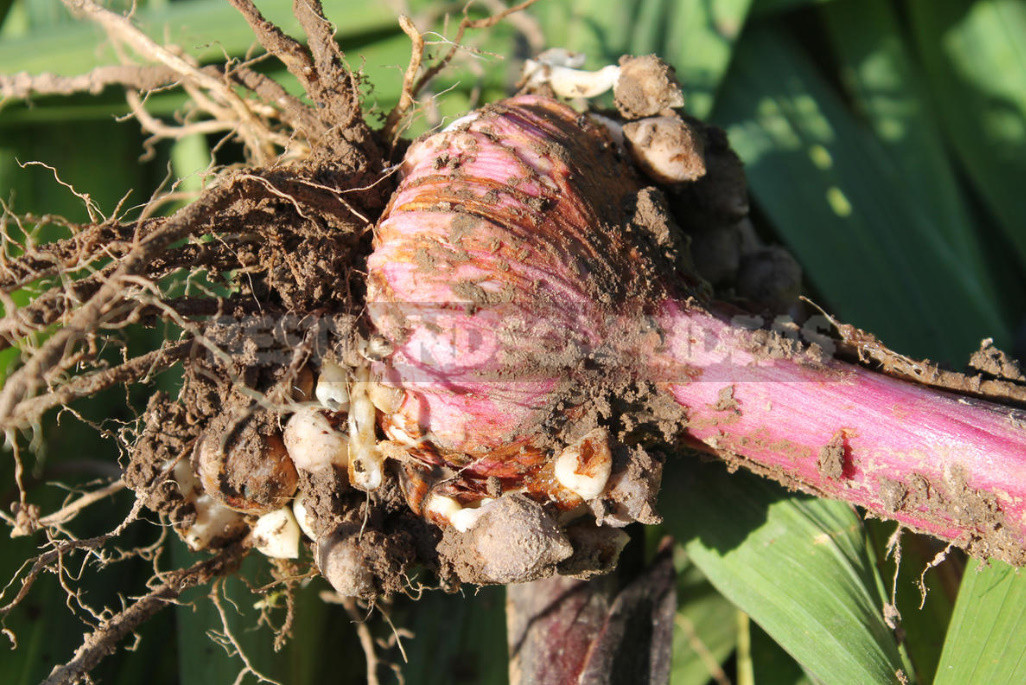
In the first place without regret discard the instances affected by pests and diseases, too small (babies with a diameter less than 0.5 cm) and immature (full on aging say a dense covering scales dark). Some gardeners regret such corms, especially if they bloom well in the current season and devoid of wormholes.
“Grandmothers” can be left until spring and check their potential on the windowsill. If they sprout strong shoots, you can plant them again. If the shoots are thin and ugly – without regret throw.
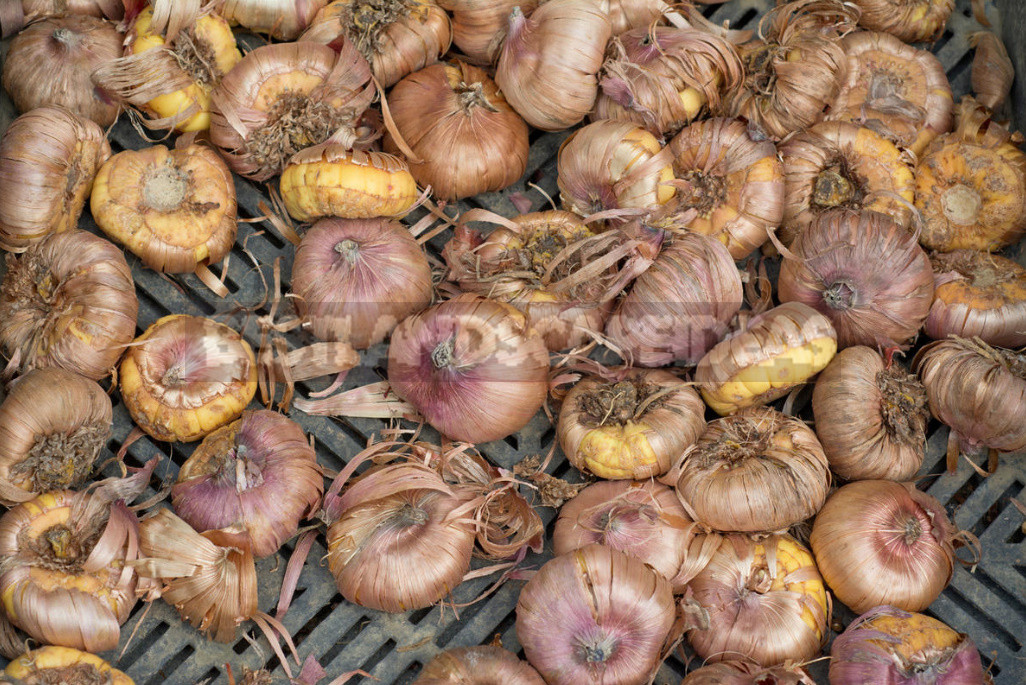
In selected corms cut the roots, and then disinfect in a solution of fungicide and protect from thrips insecticide solution. To do this, soak them for 20-30 minutes in a tank mixture of compatible drugs, and then thoroughly dry for several days, decomposing into a single layer.
After drying, transfer the planting material in boxes with mesh bottom and keep a couple of weeks at + 25…+30°C, stirring gently from time to time. In the next 4-6 weeks reduce performance up to +18…+22°C. After that can lay gladiolus in storage. Store large corms at a temperature of + 5…+8°C and a humidity of about 60-75%. Kiddies provide other conditions: the temperature is not higher than +3°C and humidity is not less than 85-90%.
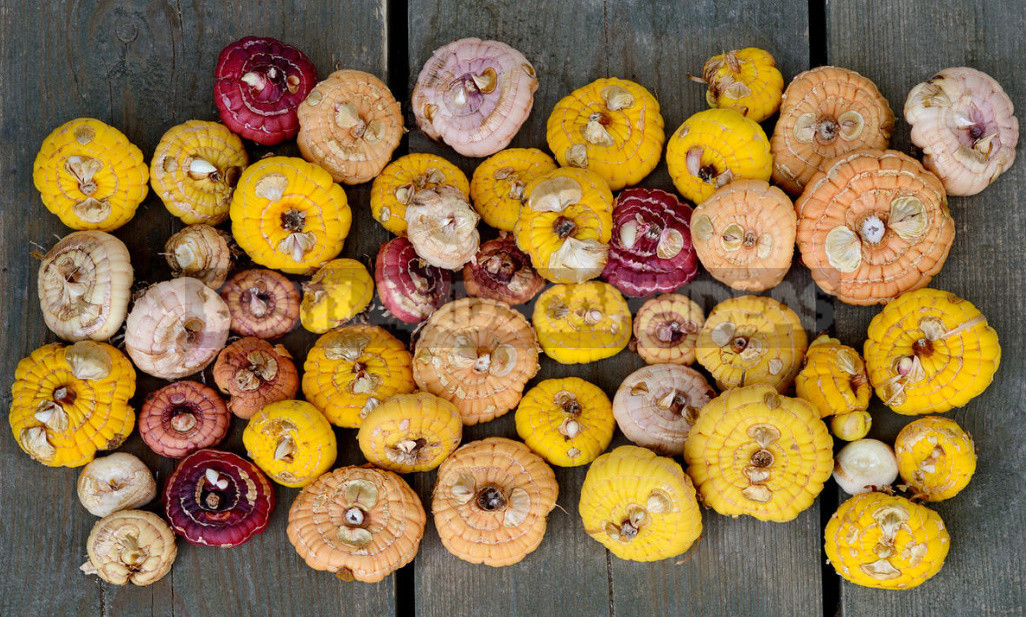
Try to provide gladiolus proper care after flowering, because this period is the most difficult in its annual development cycle. Feeling your sincere love and care, the proud handsome man will certainly respond to this attitude and will please you next season with a magnificent flowering.
Surely among the readers there are fans of this majestic flower. Tell us in the comments how you care for your gladiolus after flowering, when you dig and how you prepare corms for the winter.
